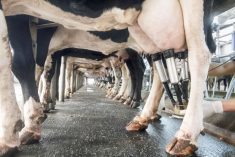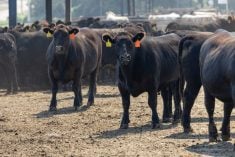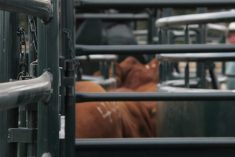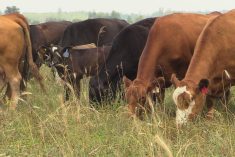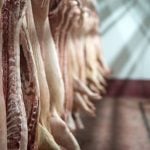Dec. 1 — Feeder cattle prices in Western Canada remain soft due to larger available supplies and negative margins in the finishing feedlot sector. Values were $1 to $2 per hundredweight (cwt) lower on average this past week, with cattle merchants reporting additional pressure on the heavier calves. “Tax deferred” buying is starting to step forward more aggressively, but this is unable to sustain the current market structure.
Finishing feedlot margins remain in red ink, which is tempering buying enthusiasm at the current levels. Weakness in the deferred live cattle futures will continue to pressure nearby replacement values.
Read Also
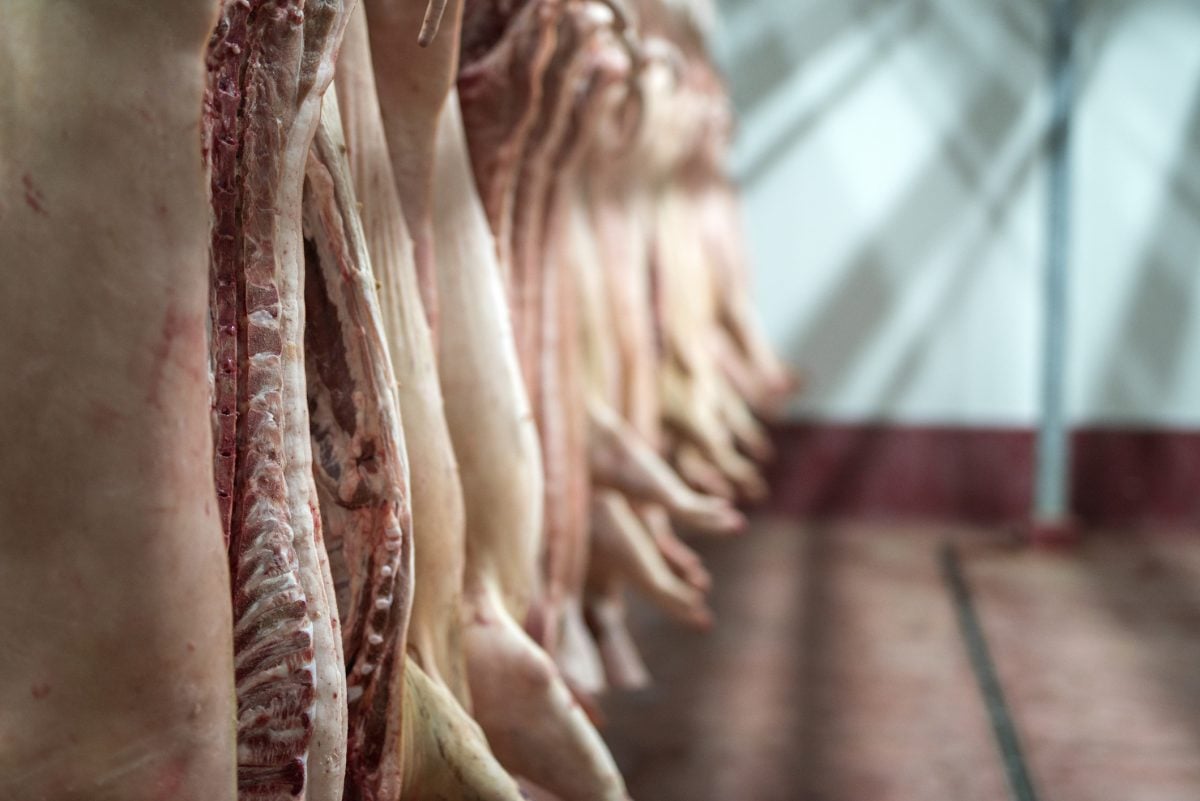
U.S. livestock: Cattle slip back, hogs gain
Chicago cattle futures slipped back on Friday after Thursday’s pause. Hog futures crept upward. Most-active December live cattle futures closed…
U.S. auction markets are anticipating larger supplies of light-weight feeder cattle over the next three weeks. Heifer retention is not as large as earlier anticipated. The U.S. and Canadian cow herds are expected to show year-over-year declines on Jan. 1, 2010.
The beef and cattle markets are functioning to encourage demand. The Canadian dollar continues to strengthen and with larger supplies of U.S. feeder cattle coming on the market, Canadian exports will remain at the lower levels.
In the past two years, there has been seasonal tendency for feeder cattle prices to bottom in the December-through-January timeframe. Feeder cattle prices are expected to remain under pressure and then stabilize in late January.
Replacement cattle have potential to strengthen in late winter; however, the U.S. corn crop may be smaller than earlier anticipated and higher feed grain costs could temper strength in the feeder market at that time.
— Jerry Klassen is a commodity market analyst in Winnipeg and maintains an interest in the family feedlot in southern Alberta. He can be reached at [email protected] for questions or comments.
The material contained herein is for information purposes only and is not to be construed as an offer for the sale or purchase of securities, options and/or futures or futures options contracts. While the information in this publication cannot be guaranteed, it was obtained from sources believed to be reliable. The risk of loss in futures trading can be substantial. The article is an opinion only and may not be accurate about market direction in the future. Do not use this information to make purchasing or selling decisions. Each individual should do their own research on market conditions.




